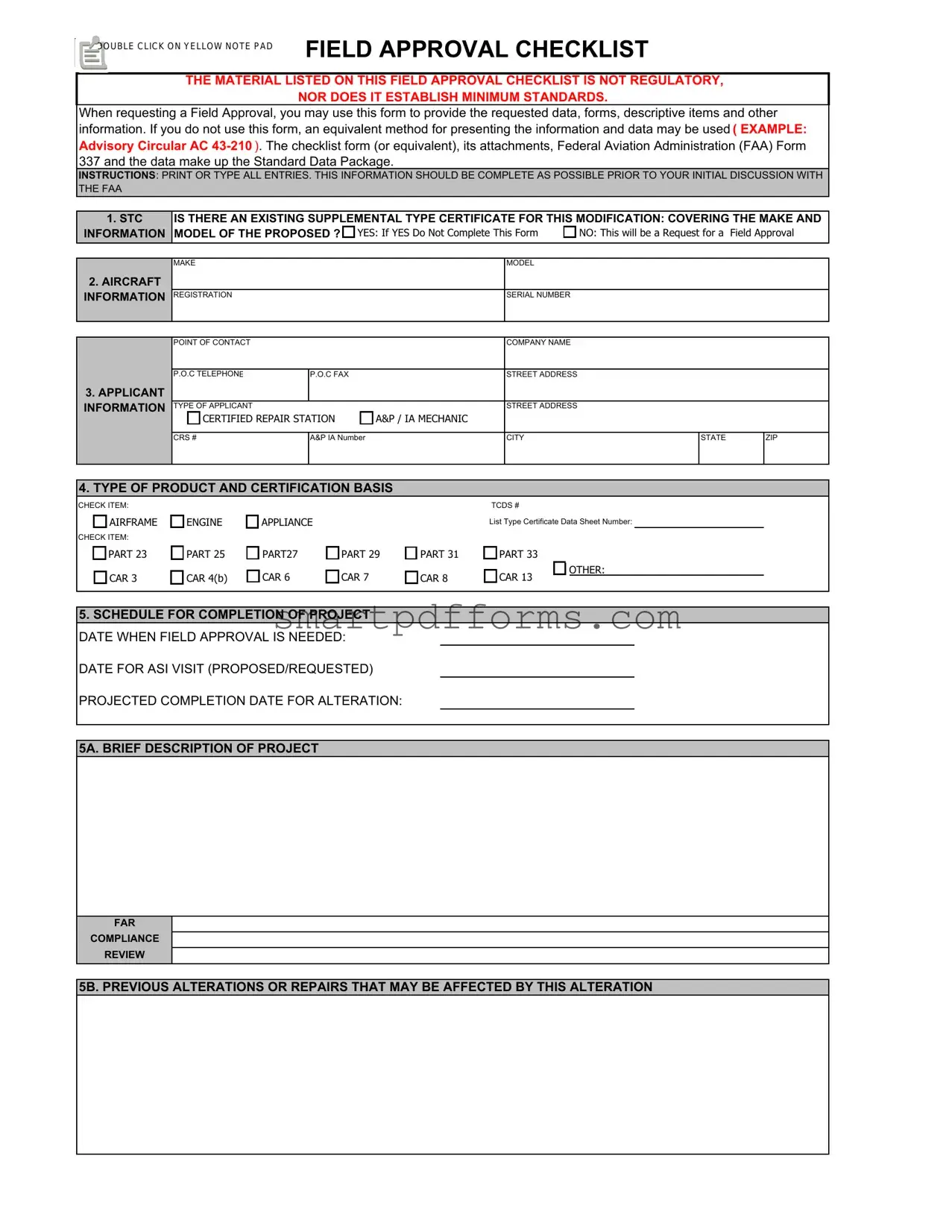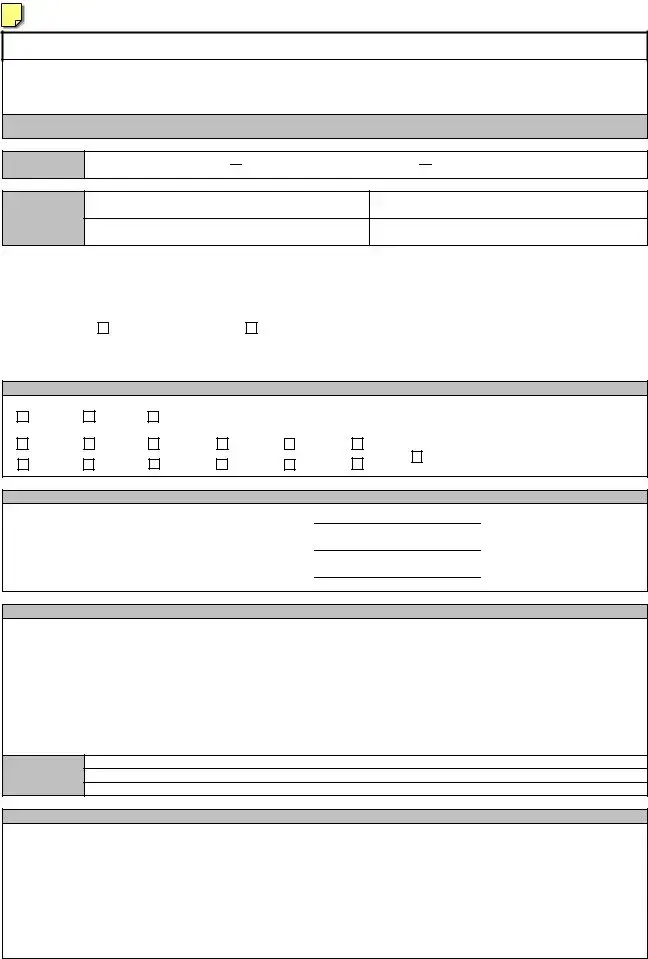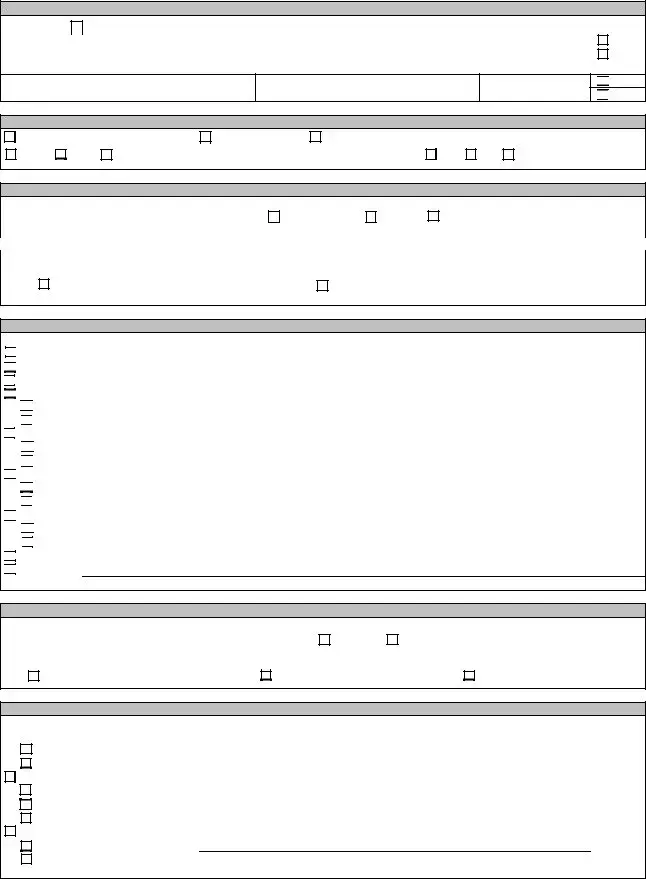Blank Field Approval Checklist PDF Template
The Field Approval Checklist form serves as a comprehensive tool for individuals seeking field approval for modifications to aircraft. This form, not legislatively mandated nor establishing minimum standards, facilitates the submission of necessary data, forms, and descriptions crucial for the approval process. The contents, along with FAA Form 337 and accompanying data, constitute the Standard Data Package required for field approval.
When detailed and accurate information is prepared and submitted using this checklist, the process with the Federal Aviation Administration (FAA) commences on solid footing. To ensure a smooth approval path, it is essential to thoroughly complete this form or present the information via an equivalent method, like Advisory Circular AC 43-210.
Interested parties are encouraged to fill out the Field Approval Checklist form by clicking the button below, ensuring all entries are printed or typed as clearly as possible before initiating discussions with the FAA.


 DOUBLE CLICK ON YELLOW NOTE PAD
DOUBLE CLICK ON YELLOW NOTE PAD 



 DER
DER
 DAR
DAR
 FAA FORM 337 FOR THE ALTERATION PROPOSED
FAA FORM 337 FOR THE ALTERATION PROPOSED
 COPIES OF OTHER PREVIOUSLY APPROVED FAA FORM 337 (SUPPORTING DATA)
COPIES OF OTHER PREVIOUSLY APPROVED FAA FORM 337 (SUPPORTING DATA)

 COPY OF SUPPLEMENTAL TYPE CERTIFICATE (STC) (SUPPORTING DATA)
COPY OF SUPPLEMENTAL TYPE CERTIFICATE (STC) (SUPPORTING DATA)
 DRAWINGS,SCHEMATICS & DIAGRAMS
DRAWINGS,SCHEMATICS & DIAGRAMS
 ELECTRICAL DRAWINGS
ELECTRICAL DRAWINGS
 STRUCTURAL DRAWINGS
STRUCTURAL DRAWINGS

 SUPPORTING TEST DATA
SUPPORTING TEST DATA
 EMI/RFI PROCEDURES
EMI/RFI PROCEDURES
 GROUND TEST PROCEDURES
GROUND TEST PROCEDURES
 LOAD ANALYSIS
LOAD ANALYSIS
 ELECTRICAL
ELECTRICAL
 STRUCTURAL
STRUCTURAL
 FAA FORM
FAA FORM 
 ELECTRICAL
ELECTRICAL
 STRUCTURAL
STRUCTURAL
 PLACARDS (COPY OF EXACT VERBIAGE)
PLACARDS (COPY OF EXACT VERBIAGE)
 OTHER
OTHER